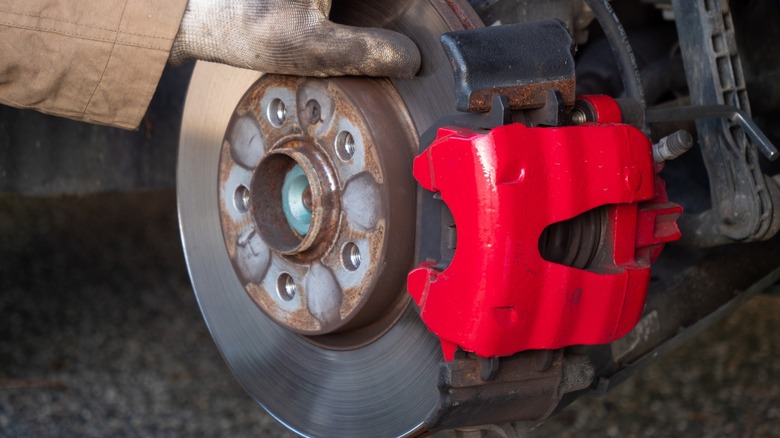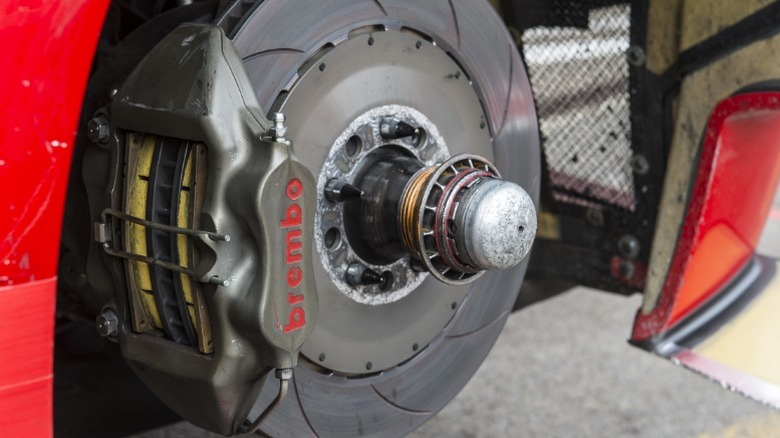What Does A Brake Caliper Piston Do And How Many Does The Average Car Need?
When it comes to cars and car parts, a lot goes into sending you down the road and making sure you can come to a stop when you arrive at your destination. As you're probably aware, our vehicles rely on braking systems to help slow down. Modern automotive brake systems depend on hydraulic pressure, created using a master cylinder and brake fluid, as well as either drum brakes, disc brakes, or a combination of the two.
Disc brakes are the more modern style of automotive brake systems. Most newer cars have at least one set of disc brakes on the front axle, and many contemporary vehicles use disc brakes on both the front and rear axles. As mentioned, these systems rely on hydraulic pressure, which is generated by a master cylinder compressing hydraulic brake fluid. The compressed fluid then travels through your brake lines to reach the brakes at each wheel.
For disc brake systems, the pressurized fluid helps compress a caliper, which forces brake pads, made of friction materials like ceramic or metal, into a metal rotor or disc. That action creates friction, which helps your car slow down and come to a stop. The disc brake calipers are able to compress thanks to both brake fluid and pistons that expand within a cylinder when you press the brake pedal. While all modern disc brake calipers function in a relatively similar way, they're not all created equal, and they can have varying numbers of pistons, depending on the type of brakes and their application. If you're interested in learning more about how many brake caliper pistons the average car has, stick around.
How many brake caliper pistons does the average car have?
Disc brake caliper pistons vary in size, depending on the type of vehicle and the brake's applications. Generally, most passenger vehicles with disc brake systems have brake calipers with between one and six pistons per caliper. However, some high-performance brake calipers can have up to 10 pistons, like those found on the Porsche 911 Turbo S, or even 12 pistons.
That means that average cars can typically have anywhere from two total brake caliper pistons (in the case of single-axle disc brake systems with one piston per caliper) to 24 total brake caliper pistons (for vehicles with disc brakes on both axles and six pistons per caliper). As mentioned, brake calipers with a larger number of pistons are commonly found on high-performance vehicles. However, that's not necessarily because more pistons equal greater stopping power. In reality, larger calipers with more pistons are ideal for high-performance situations because they can provide superior clamping force against the rotor, allow for the use of larger brake pads and rotors, and help reduce friction, which, in turn, can help prevent brake overheating.
That doesn't mean you need larger calipers for a safe braking experience, though. While these types of calipers are great for some types of high-performance driving, they're not essential. Many NASCAR vehicles use only four-piston calipers, depending on the track and the type of race, and most smaller stock calipers will handle everyday driving with no issues.

